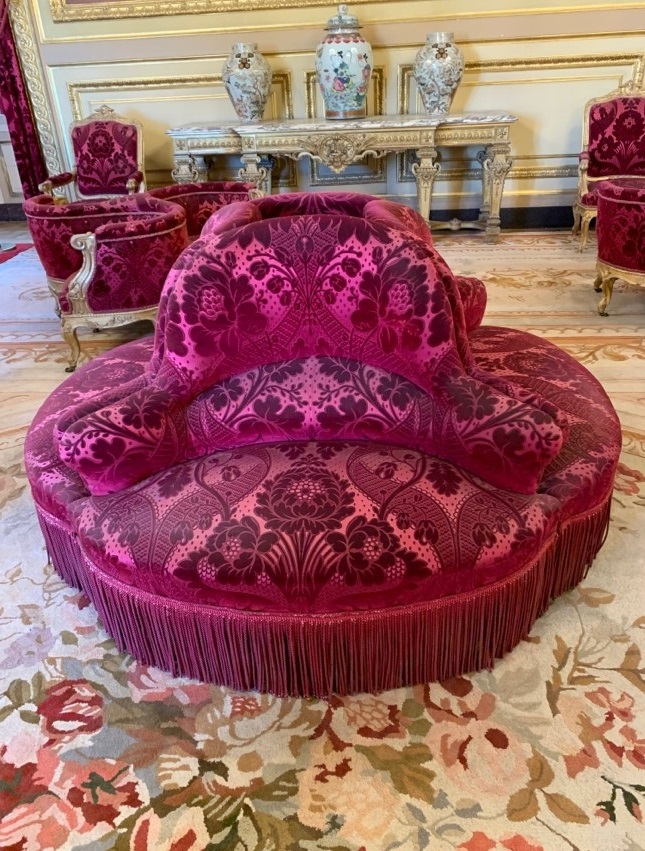

Napoleon III’s Circular Sofa
My Louvre by Antoine Compagnon

Napoleon III’s Circular Sofa
In The Prisoner, the fifth volume of Marcel Proust’s In Search of Lost time, the invented writer Bergotte feels faint while visiting an exhibition of Dutch Paintings at the Jeu de Paume. In front of the “little patch of yellow wall” in Vermeer’s View of Delft, he collapses onto a circular sofa. He thinks it is indigestion, and fears that he will be a “human interest item” in the evening newspapers. But he falls from the sofa, dead as a doornail. For the Proust exhibition at the French National Library marking the centenary of his death (1922), I wanted, at all costs, to have a circular sofa to commemorate this essential scene in the novel. But France is resolutely modern. None of the Paris museums seem to have kept their centuries-old furniture. We had to rent a circular sofa from a film- and theater-props company. Now, I have just found the ideal sofa, sublime, welcoming, right in the middle of the Grand Salon of the Napoleon III Apartments (Richelieu, room 544). And yet I have no regrets: the Louvre would never have lent it to us.